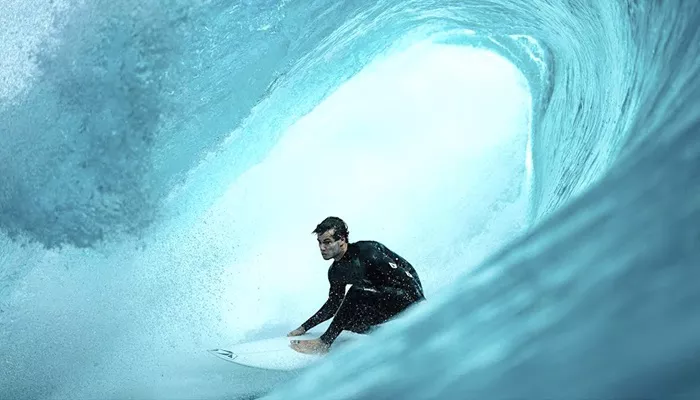Surfing is a sport that relies heavily on natural elements, making the right conditions crucial for an optimal experience. Whether you’re a beginner looking for smooth, easy-to-ride waves or an advanced surfer chasing powerful barrels, understanding what constitutes good surfing conditions is essential.
Several factors influence the quality of waves, including wind, swell, tide, and ocean bottom topography. By learning how these elements interact, surfers can better predict when and where to catch the best waves. This article will break down the essential components of good surfing conditions, helping you make informed decisions before heading into the water.
The Importance of Wave Quality
Waves are the foundation of surfing, and their quality is determined by a mix of meteorological and oceanographic factors.
Ideal waves have a clean, well-formed shape, providing smooth and consistent rides. Understanding the key factors that shape waves will help surfers select the best locations and times for surfing.
Swell: The Driving Force Behind Waves
Swell is the energy generated by distant storms, often forming waves that eventually reach the shoreline. Swell size, direction, and period all influence wave quality.
Swell Size
Measured in feet or meters, swell size determines the height of the waves.
For beginners, a swell size of 1 to 3 feet is ideal.
Intermediate and advanced surfers may prefer swells ranging from 4 to 10 feet or more.
Swell Direction
The direction of the swell impacts how waves break on different coastlines.
A direct swell that aligns with the coastline produces more powerful and organized waves.
A cross-swell (angled swell) may create choppier conditions.
Swell Period
The swell period is the time between successive wave crests, measured in seconds.
A longer swell period (10-16 seconds) produces more powerful and well-formed waves.
A shorter swell period (less than 8 seconds) results in weaker, choppier waves.
Wind: The Shaper of Waves
Wind plays a significant role in wave formation and surface conditions. Depending on its direction and strength, wind can either improve or degrade wave quality.
Offshore vs. Onshore Winds
Offshore winds (blowing from land to sea) create smooth, well-shaped waves, making them ideal for surfing.
Onshore winds (blowing from sea to land) make waves choppy and less organized, reducing their rideability.
Cross-shore winds (blowing parallel to the shore) can cause waves to lose their clean shape, though mild crosswinds may not be too disruptive.
Wind Strength
Light to moderate offshore winds (5-10 knots) create the best surfing conditions.
Strong winds (over 15 knots) can make it difficult to paddle and ride waves effectively.
Tides: Their Influence on Wave Shape
Tides, caused by the gravitational pull of the moon and sun, affect how waves break. Some surf spots work best at certain tide levels, so understanding local tide patterns is crucial.
High Tide
Waves break closer to shore with fuller, softer shapes.
Some surf spots work better at high tide, especially reef breaks.
Can reduce wave power if the tide is too high.
Low Tide
Waves break farther out, often with steeper and more powerful faces.
Many beach breaks offer better conditions at mid to low tide.
Extremely low tides may expose rocks and reefs, creating hazards.
Best Tide for Surfing
Mid-tide is often the best for a balanced wave shape.
Checking local surf reports will provide insight into optimal tide conditions for specific breaks.
Ocean Floor and Wave Break Types
The type of ocean bottom influences how waves break, determining whether a spot is suited for beginners or experienced surfers.
Beach Breaks
Waves break over sandy bottoms.
Ideal for beginners due to softer landings.
Waves can shift frequently due to changing sandbanks.
Reef Breaks
Waves break over coral reefs or rocky outcrops.
Offer powerful, hollow waves ideal for advanced surfers.
Can be dangerous due to sharp reefs and shallow water.
Point Breaks
Waves break along a headland or rocky point.
Produce long, consistent rides perfect for all skill levels.
Can become crowded due to their high-quality waves.
Water Temperature and Weather Conditions
While often overlooked, water temperature and weather play a role in surfing comfort and performance.
Warm vs. Cold Water
Warm water (above 20°C/68°F) is ideal for surfing without a wetsuit.
Cold water (below 15°C/59°F) requires wetsuits, booties, and hoods to stay warm.
Hypothermia can be a risk in extreme cold-water conditions.
Weather Conditions
Clear, sunny weather provides the best visibility and overall experience.
Rain can affect water quality, especially near river mouths.
Stormy conditions may generate big waves but can be hazardous.
Crowd Levels and Surf Etiquette
Even if all surfing conditions are perfect, overcrowding can impact the experience. Knowing when and where to surf can help avoid frustration and ensure a fun session.
Best Times to Avoid Crowds
Early morning and late afternoon are usually less crowded.
Weekdays tend to be quieter than weekends.
Less popular surf spots often provide more space and fewer interruptions.
Surf Etiquette
Respect the right of way: The surfer closest to the peak has priority.
Don’t drop in: Avoid taking off on a wave if another surfer is already riding it.
Paddle with awareness: Stay out of the way of incoming surfers when paddling out.
Conclusion
Good surfing conditions depend on a combination of factors, including swell, wind, tide, and local ocean topography.
Understanding how these elements interact allows surfers to plan their sessions wisely and maximize their time in the water. By monitoring surf reports, choosing the right spots, and respecting surf etiquette, you can ensure a safe and enjoyable experience on the waves.

